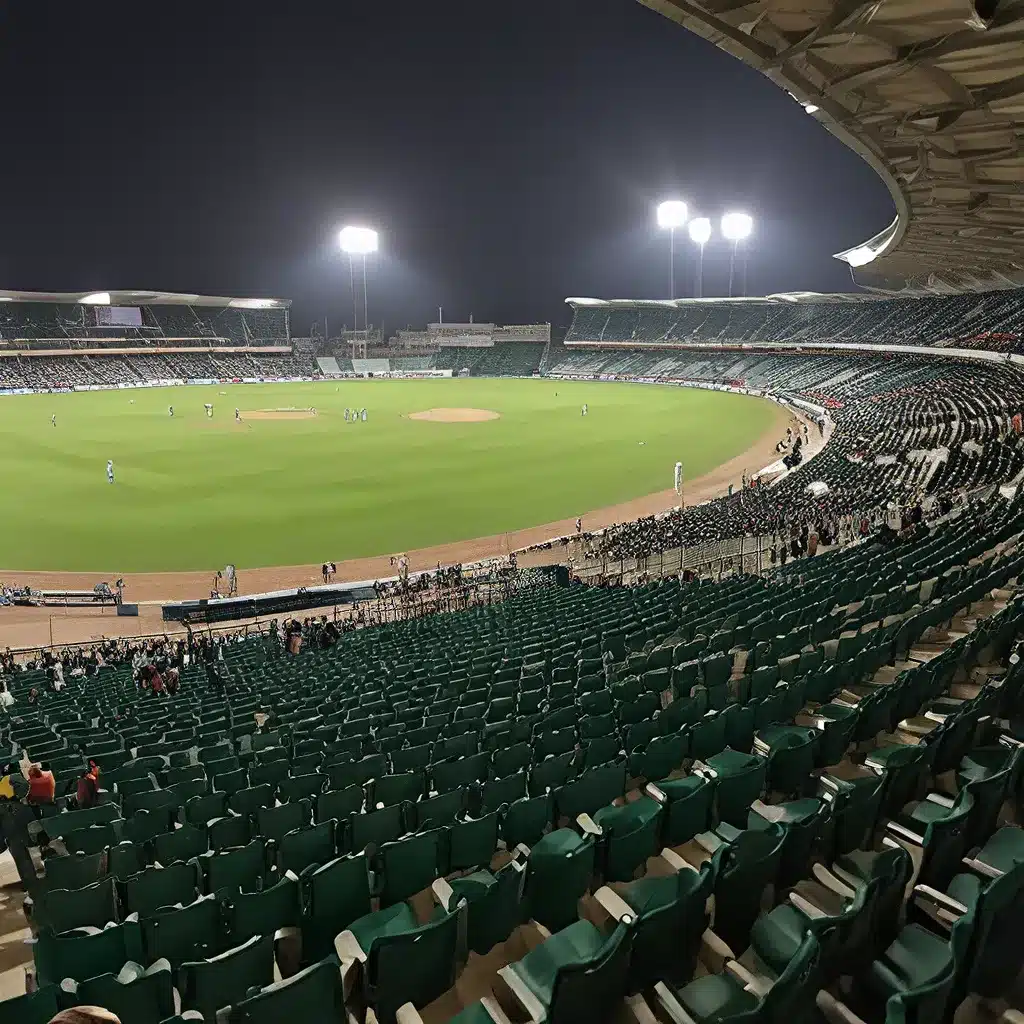
The Heart of Pakistani Cricket
Gaddafi Stadium, located in the bustling city of Lahore, Pakistan, is more than just a sports venue – it is a symbol of the nation’s unwavering passion for cricket. This iconic stadium, often referred to as the “Casablanca of Cricket,” has witnessed some of the most thrilling and historic moments in the sport’s annals, cementing its place as a revered institution in the hearts of Pakistani fans.
The stadium’s origins can be traced back to the 1950s, when it was initially known as Lahore Stadium. It was later renamed in honor of the late Libyan leader, Muammar Gaddafi, after his visit to Pakistan in 1974. This decision, however, has not been without controversy, with ongoing debates about the appropriateness of the name and calls for its restoration to the original Lahore Stadium.
Regardless of the name, Gaddafi Stadium has become a mecca for cricket enthusiasts, drawing crowds from all over the country and beyond to witness the intense rivalries and nail-biting matches that unfold within its hallowed grounds. The stadium’s rich history is intertwined with the rise and evolution of Pakistani cricket, making it a testament to the nation’s unwavering commitment to the sport.
Architectural Marvels and Design Innovations
The Gaddafi Stadium is a marvel of architectural design, blending traditional elements with modern functionality. The stadium’s distinctive horseshoe-shaped structure and towering grandstands have become an iconic part of the Lahore skyline, visible from miles away.
One of the stadium’s most impressive features is its floodlighting system, which was a groundbreaking innovation when it was first installed in the 1970s. The powerful lights, which can illuminate the entire playing field, have enabled the hosting of day-night matches, expanding the possibilities for cricket events and enhancing the spectator experience.
The stadium’s seating capacity, which can accommodate up to 27,000 enthusiastic fans, is another testament to its grandeur. The well-designed layout ensures that every spectator has an unobstructed view of the action, creating an immersive and captivating atmosphere.
Hosting Iconic Matches and Tournaments
Gaddafi Stadium has been the stage for some of the most iconic matches and tournaments in cricket history. It has hosted a multitude of international matches, including Test matches, One-Day Internationals, and Twenty20 Internationals, showcasing the best talent the sport has to offer.
One of the stadium’s most memorable events was the 1996 Cricket World Cup semi-final between India and Pakistan, which attracted a record-breaking crowd of over 60,000 spectators. The electric atmosphere and the intense rivalry between the two nations created a truly unforgettable experience for all in attendance.
The stadium has also played a pivotal role in hosting the Pakistan Super League (PSL), the country’s premier domestic T20 cricket tournament. The PSL matches at Gaddafi Stadium have become a source of immense pride and joy for Pakistani fans, who flock to the venue to support their favorite teams and players.
Beyond Cricket: Cultural Significance and Community Engagement
Gaddafi Stadium’s significance extends far beyond the confines of the cricket field. It has become a hub of cultural activities and community engagement, serving as a gathering place for various events and celebrations.
The stadium’s expansive grounds have been utilized for hosting cultural festivals, concerts, and even political rallies, further cementing its status as a central part of Lahore’s vibrant social fabric. These events not only bring people together but also showcase the diverse cultural heritage of Pakistan.
The stadium’s management has also made concerted efforts to engage with the local community, organizing educational programs, sports clinics, and outreach initiatives. These efforts have helped to foster a deeper connection between the stadium and the people of Lahore, further solidifying its position as a beloved institution.
Challenges and Ongoing Developments
Despite its iconic status, Gaddafi Stadium has not been without its challenges. Security concerns, particularly in the aftermath of the 2009 attack on the Sri Lankan cricket team, have led to increased scrutiny and measures to ensure the safety of players and spectators.
Moreover, there have been ongoing debates about the appropriateness of the stadium’s name, with some advocating for a return to the original Lahore Stadium. This discussion reflects the broader sociopolitical dynamics in Pakistan and the evolving landscape of sports and cultural representation.
Nonetheless, the stadium’s management and the Pakistan Cricket Board have remained committed to continuous improvements and renovations. Recent upgrades, such as the installation of a state-of-the-art video scoreboard and the enhancement of the player facilities, have helped to maintain Gaddafi Stadium’s status as a world-class cricket venue.
Conclusion: A Shrine to Pakistan’s Cricket Legacy
Gaddafi Stadium is more than just a cricket stadium – it is a symbol of Pakistan’s unwavering passion for the sport. As the country’s premier cricketing venue, it has witnessed some of the most iconic moments in the game’s history, cementing its place as a revered institution in the hearts of Pakistani fans.
The stadium’s architectural marvels, its hosting of legendary matches, and its cultural significance have all contributed to its enduring legacy. Despite the challenges it has faced, Gaddafi Stadium remains a shrine to Pakistan’s cricket heritage, a place where the nation’s love for the sport is celebrated and preserved for generations to come.
As the country continues to evolve, the future of Gaddafi Stadium remains a topic of active discussion and debate. But one thing is certain: this iconic venue will continue to captivate and inspire cricket enthusiasts around the world, forever etching its name in the annals of the sport’s illustrious history.

